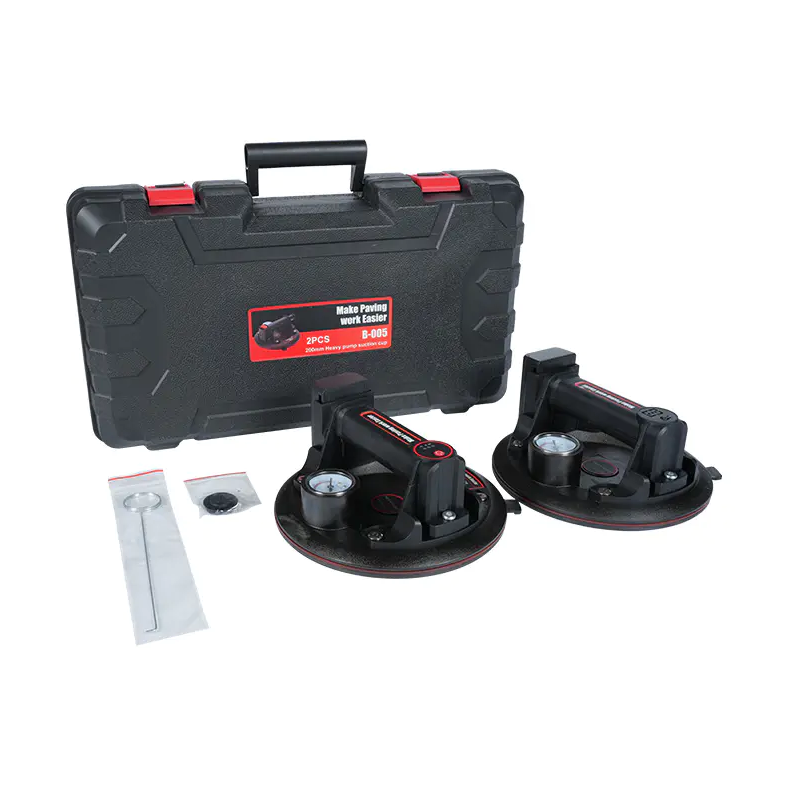The Tile Vacuum Suction Cup is an essential tool used in various industries, particularly in construction and tiling applications, where it facilitates the handling and installation of tiles with increased safety and efficiency. Understanding its technical aspects and functional design provides valuable insights into its widespread adoption in professional settings.
At its core, the Tile Vacuum Suction Cup operates on the principle of creating a vacuum seal between the suction cup and the tile surface. This seal generates sufficient suction force to securely hold tiles during lifting or placement, reducing the risk of slips or drops. The strength and reliability of this vacuum seal depend significantly on the materials used and the precision in manufacturing.
Typically, the suction cup is made from elastomeric materials such as rubber or silicone. These substances are selected for their flexibility, resilience, and ability to conform to smooth tile surfaces. The elasticity ensures that the cup maintains contact across the tile's surface area, preventing air leakage that would weaken suction. Additionally, resistance to environmental factors like temperature fluctuations and exposure to dust or moisture is crucial for the durability of the suction cup.
From a design perspective, the size and shape of the Tile Vacuum Suction Cup play a fundamental role. Larger cups generally provide higher suction forces but may be less maneuverable in tight spaces. Manufacturers often offer a range of sizes to accommodate different tile dimensions and job site requirements. The contour of the cup must be engineered to optimize the contact surface without compromising ease of use.
The vacuum generation mechanism integrated with the Tile Vacuum Suction Cup can vary. Manual hand pumps or lever-operated systems are common, providing the user control over the vacuum pressure. This adjustability allows for a secure hold on tiles of different materials and finishes, from glazed ceramic to natural stone. In some models, automatic or semi-automatic vacuum systems are incorporated, although manual systems remain popular for their simplicity and reliability.
Durability and safety are paramount when using Tile Vacuum Suction Cups. The connection between the suction cup and the handle or frame must withstand the mechanical stresses encountered during tile handling. This is often achieved through reinforced bonding or mechanical fasteners. Manufacturers conduct extensive testing to ensure that the suction cup assembly remains secure under load, preventing accidents on site.
Another technical consideration is the ease of releasing the vacuum seal when tile placement is complete. An efficient release mechanism prevents damage to the tile surface and allows for quick repositioning or removal of the suction cup. This feature is integrated into many Tile Vacuum Suction Cup designs as a small valve or lever.
The application range of the Tile Vacuum Suction Cup extends beyond tiling. It is also used in glass handling, metal sheet manipulation, and other industries where temporary but strong attachment to smooth surfaces is required. The versatility of this tool makes it a valuable component in various material handling toolkits.
Maintenance and longevity are critical factors for professionals relying on Tile Vacuum Suction Cups. Regular inspection of the suction cup material for wear, cracks, or deformation ensures sustained performance. Proper cleaning and storage further extend the service life of the product. Most manufacturers provide guidelines to help users maintain the suction cup in good working condition.
The Tile Vacuum Suction Cup combines material science, ergonomic design, and mechanical engineering to provide a reliable solution for safe tile handling. Its functionality depends on a well-maintained vacuum seal, appropriate material selection, and robust construction. Understanding these aspects enables users and manufacturers alike to make informed choices regarding the design, selection, and use of these tools in various professional contexts.

